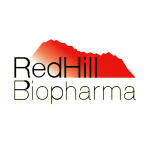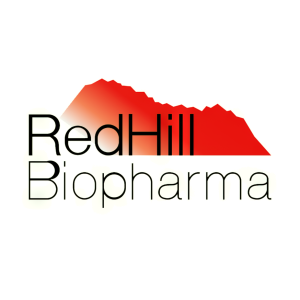Welcome to our dedicated page for Redhill Biopharm SEC filings (Ticker: RDHL), a comprehensive resource for investors and traders seeking official regulatory documents including 10-K annual reports, 10-Q quarterly earnings, 8-K material events, and insider trading forms.
Clinical-stage biotech filings are notoriously dense鈥攅specially when they cover multiple Phase 3 trials, FDA correspondence, and royalty structures like RedHill Biopharma鈥檚. If you have ever searched the 300-page annual report for an opaganib trial update or hunted through Form 4s to see whether executives bought shares after a Talicia sales milestone, you know the challenge. Our SEC filings hub solves this pain by pairing every RedHill Biopharma disclosure with AI-powered summaries that explain the jargon in plain English.
You鈥檒l find the complete set of documents鈥�10-K annual report, 10-Q quarterly earnings, 8-K material events, and proxy statements鈥攕treaming from EDGAR in real time. Need 鈥淩edHill Biopharma insider trading Form 4 transactions鈥� or a quick view of 鈥淩edHill Biopharma quarterly earnings report 10-Q filing鈥�? One click shows the original text, an expert synopsis, and key data points. Stock Titan鈥檚 algorithms tag R&D expense trends, highlight liquidity discussions, and surface any RedHill Biopharma executive stock transactions Form 4, so you can focus on decision making instead of page turning.
Whether you鈥檙e tracking potential FDA approval timelines, comparing segment revenue from Talicia and Aemcolo, or monitoring board compensation, our platform keeps you ahead. Use AI to drill into 鈥淩edHill Biopharma proxy statement executive compensation鈥�, receive alerts for 鈥淩edHill Biopharma 8-K material events explained鈥�, and explore 鈥淩edHill Biopharma earnings report filing analysis鈥� without reading line by line. Understanding RedHill Biopharma SEC documents with AI means faster insights, fewer surprises, and more confident investing.
RedHill Biopharma reported receipt of its first ex-U.S. Talicia sales milestone, royalties and other payments totaling approximately $1.1 million following Talicia's first commercial launch outside the U.S. in 2024. Talicia is an FDA-approved, rifabutin-based therapy for H. pylori, a common infection affecting over 50% of adults worldwide and a major risk factor for gastric cancer and peptic ulcers. The product has QIDP designation providing up to eight years of U.S. exclusivity and patent protection through 2042. RedHill said Talicia showed up to 90% eradication in adherent patients in Phase 3 and contrasted this with lower effectiveness of clarithromycin-based regimens.
RedHill Biopharma disclosed it is not in compliance with Nasdaq Listing Rule 5550(b), which requires minimum stockholders' equity of $2,500,000. Nasdaq notified the Company of the deficiency on April 15, 2025 and on August 8, 2025 granted an extension giving the Company until October 13, 2025 to regain compliance.
The Company has submitted a plan to Nasdaq to restore compliance; if it does not meet the requirement by the extension date it may appeal to a Hearings Panel for additional time. The filing also notes that forward-looking statements about achieving compliance depend on market conditions and the satisfaction and closing of financing arrangements referenced in other filings.
RedHill Biopharma (Nasdaq: RDHL) filed a Form 6-K announcing positive FDA Type C meeting feedback for RHB-204, its next-generation, orally administered triple-antibiotic for Crohn鈥檚 disease (CD). The Agency agreed to a first-ever Phase 2 trial in MAP-positive CD patients, with co-primary endpoints of mucosal remission and MAP eradication. Use of rapid MAP diagnostics from two academic partners allows a smaller sample size, meaning lower cost and faster completion.
RHB-204 is protected by patents to 2041 and leverages Phase 3 data from predecessor RHB-104 that showed a 64 % efficacy improvement versus standard of care. Management plans to fund the study through non-dilutive grants/partnerships and pursue additional FDA designations (orphan, breakthrough, fast track) that could confer exclusivity and priority review vouchers. The Crohn鈥檚 market is forecast to expand from $13.6 bn in 2024 to $19 bn in 2033, creating significant commercial upside if the program succeeds. Key risks remain: trial execution, securing external funding, and eventual regulatory approval.
RedHill Biopharma has filed an F-1 registration statement for a potential offering of up to 5,596,490 American Depositary Shares (ADSs) representing 55,964,900,000 ordinary shares. The offering relates to resale by Alumni Capital LP through an Any Market Purchase Agreement dated June 20, 2025.
Key offering details:
- Committed equity line of credit up to $10 million with Alumni Capital
- Each ADS represents 10,000 ordinary shares
- Includes 5,263,157 AMPA ADSs and 333,333 Commitment Warrant ADSs
- Purchase price varies based on VWAP: 82% for initial purchase, 90% for regular purchases, or 96% for forward purchases
The company is an Israeli-based foreign private issuer trading on Nasdaq under "RDHL". RedHill will not receive proceeds from ADS resales but will receive proceeds from warrant exercises. Alumni Capital is considered an underwriter and subject to a 4.99% ownership limitation. The last reported ADS price was $1.94 on June 24, 2025.
RedHill Biopharma has entered into an Any Market Purchase Agreement with Alumni Capital LP on June 20, 2025, enabling the company to sell up to $10 million in American Depositary Shares (ADSs). Key terms include:
- Initial tranche up to $1 million priced at 82% of lowest 5-day VWAP
- Subsequent regular purchases up to $500,000 or 60% of 5-day average trading volume at 90% of lowest 5-day VWAP
- Additional discretionary purchases up to $500,000 or 30% of same-day trading volume at 96% of lowest traded price
- Commitment Warrants issued to purchaser for 333,333 ADSs with $3.00 exercise price and 5-year term
The agreement includes a 4.99% ownership cap and requires SEC registration effectiveness. The arrangement provides RedHill with flexible funding options through June 30, 2026, subject to market conditions and company discretion.


